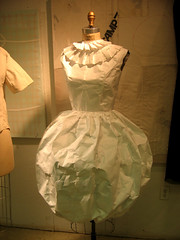Thanks to Mr Carpenter for putting me on to this.
I think there is quite a lot of mileage in pursuing the Leone link - more than this writer seems to think. Let me know if you agree.
The following is quoted from
www.geocities.com/ug97057/fistful/myview.htmlA Fistful Of Dollars is a film with a long genealogy. Sergio Leone's script was derived from Akira Kurosawa's film Yojimbo, and was enough like the earlier film that Kurosawa sued for plagiarism, and won exclusive distribution rights in Japan, and 15% of the world-wide take.
Kurosawa himself had adapted the story from an earlier work, this time a novel by Dashiell Hammett (author of The Maltese Falcon called Red Harvest. Curiously, Kurosawa cites the Westerns of John Ford as stylistic inspiration for Yojimbo, so the genre has gone full circle by the time we reach A Fistful Of Dollars.
Thirty years later, Bruce Willis starred in a Hollywood rehash of the story, this time returning to its stylistic roots as a 1920's gangster film. In this instance, however, some of the moral ambiguity is lost, as it is clear from the beginning that Willis' character, John Smith, is on the side of "good" even though he isn't a nice guy at all.
The story itself is reasonably straightforward. A mysterious lone stranger arrives in a small remote town, to find the place half-deserted. Acting as his nominal host is an innkeeper, bar owner, or something culturally similar. The stranger learns that the town has two bosses, which is normally a recipe for disaster, and this town is no exception. The stranger works for both sides, back and forth, and successfully disrupts the balance of power, resulting in the destruction of both sides.
In all three films, there is a woman held by one of the two sides, and the stranger rescues her from this situation, allowing her to escape with or return to her family, a husband and a child. Doing this exposes the stranger to the wrath of the woman's former captor, but he eventually escapes with his life, but little more than that.
The Servant Of Two Masters
If you thought that a genealogy featuring one earlier and one later film, and a 1920's American detective novel, was long enough, you were wrong, maybe. In the plagiarism dispute with Kurosawa, Sergio Leone claimed that the inspiration for the story came ultimately from The Servant Of Two Masters, by the 18th Century Italian playwright Carlo Goldoni, and therefore his estate should benefit.
Goldoni was an early proponent of a new style of Italian comedy drama, as the commedia dell'arte form was fading away. The new form featured many of the same stock characters, but in a more recognisably modern structure. Commedia dell'arte was a form based on stock characters and scenes, with a high degree of improvisation, which makes it sound very much like British pantomimes. The newer form had a higher degree of input from the script-writer, and more closely resembles modern farces, where there may be scope for the performers to, in effect, customise the play for their own place and time, but the bulk of the script is pre-set by the writer.So, did these films owe their inspiration to an 18th Century Italian play-wright? My own opinion, having read A Servant Of Two Masters, is that they did not, except on the most superficial level. The servant in Goldoni's play serves his two masters at the same time, while the stranger in these three films serves one, then the other, back and forth, while actually attempting to pursue his own interests more than those of either of the town's bosses.






















